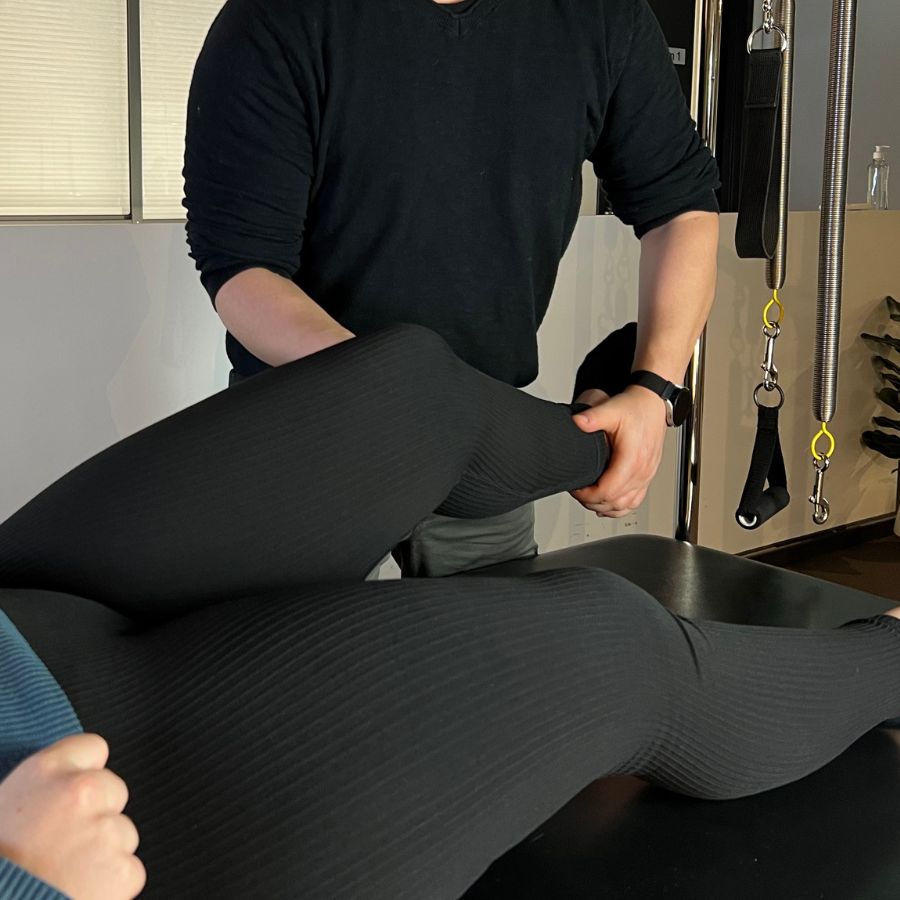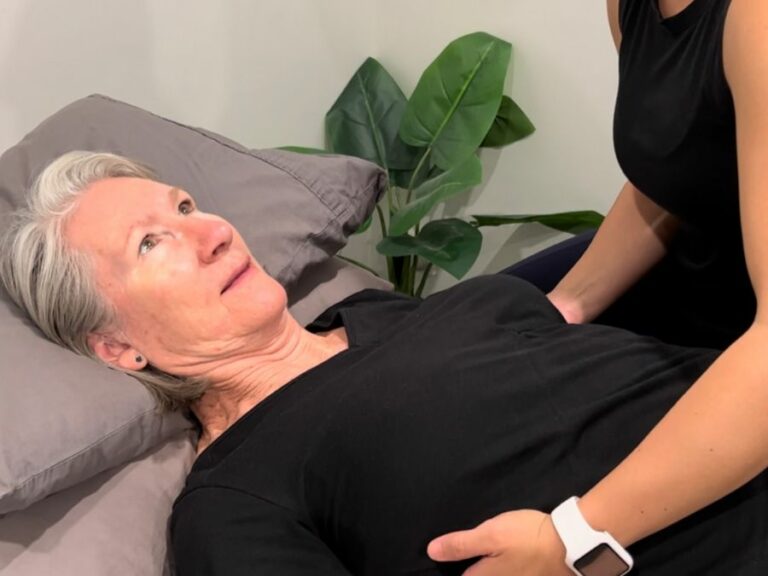HYPERMOBILITY & EDS
Would you describe yourself as bendy or hypermobile? Do you sometimes feel unstable in your joints, weak, fatigued, stiff, clumsy, or dizzy? These are all symptoms that people with hypermobility may experience on a day-to-day basis.
About Hypermobility
Hypermobility is a common condition affecting an estimated 16-20% of the population. Hypermobility has a wide range of presentations from people being bendy to those who have an extreme level of disability.
Hypermobility affects both active and passive joint stability which causes the body to have higher demands to perform simple day to day tasks. The causes of hypermobility are multidimensional as hypermobility can be acquired, inherited or a feature of a hereditary connective tissue disorder.
The first symptom hypermobile people experience is commonly pain in a variety of areas and across multiple body systems. Hypermobile symptoms often become exacerbated and symptomatic at times of altered load on the body including; during growth spurts, higher education
studies, periods of high work load, pregnancy and menopause (females) or andropause (males). Current diagnostic methods allow therapists to diagnose a someone with hypermobility from the age of six years old. Hypermobility can be misdiagnosed as fibromyalgia, depression, anxiety,
chronic pain or functional neurological disorder.
Hypermobility in Children
An estimation of 34% of infants and children under the age of twelve commonly have high levels of hypermobility. An individual can be diagnosed as hypermobile from the age of three years, and it is more common in girls than boys. Kids with hypermobility may present with delayed coordination in 37% of cases, impaired balance, recurrent injuries, pain, joint instability, reduced strength, poor posture, low tone and are often thought to be lazy or floppy. Signs of systemic system involvement may be constipation, faecal spotting, recurrent UTI’s, incontinence, cold hands and feet, sudden rise in heart rate upon standing, headaches, mental health concerns, or sleep dysfunction. Please
note that these symptoms are relevant where other diagnosis are ruled out.
Signs & Symptoms
Hypermobility refers to a spectrum of signs and symptoms. A patient who begins as hypermobile with issues may progress to have pain and activity impairment which can then lead to chronic pain, stiffness and tissue changes.
Skin signs of hypermobility to look out for can be excessively extensible skin, unusual scarring, fragile skin, prolonged healing times, and recurrent low force fractures.
People with hypermobility can present with musculoskeletal involvement including: chronic pain, joint dislocations, recurrent injuries, bruises, impaired pro-prioception, clicking joints, popping
joints, snapping joints, muscle stiffness, reduced bone mass, scoliosis, increased lumbar lordosis and/or long spindly fingers.
Gastro-intestinal dysfunction in hypermobility can present with reflux, swallowing issues, low saliva levels, early satiety, nausea, vomiting, gastroparesis (failure to empty), bloating, constipation,
diarrhea, irritable bowel syndrome, poor nutrient absorption, food intolerance, allergies, leaky gut, delayed gastric emptying, pelvic floor over activity, or distended bowel.
Gynaecological considerations include vaginal prolapse, urine incontinence, incontinence in children, daytime leakage, high prevalence of UTIs, anal incontinence, urgency, frequency, urinary
retention, hormonal imbalance, menstruation disruption and endometriosis.
Other conditions that may present alongside hypermobility include anxiety, neurodiversity (ie. autism), an extensive pain history, and mast cell activation syndrome.
Immediate referral is required for symptoms including cardiac and circulatory abnormalities, lens, or corneal problems, rectal or uterine ruptures.
Types of Hypermobility
Hypermobility is a connective tissue disorder, diagnosed via exclusion of other disorders alongside positive objective examination. There are more than 200 known connective tissue disorders with specific traits include those specific to hypermobility listed below:
- Asymptomatic Generalised Joint Hypermobility (A-GJH)
- Generalised Hypermobility Spectrum Disorder (G-HSD)
- Localised Hypermobility Spectrum Disorder (L-HSD)
- Peripheral Hypermobility Spectrum Disorder (P-HSD)
- Historical Hypermobility Spectrum Disorder (H-HSD)
- Hypermobile Ehlers Danlos Syndrome (H – EDS) is a connective tissue disorder that is diagnosed by a geneticist or rheumatologist.
A formal H-EDS disorder results in improved interdisciplinary communication and potential for successful NDIS application, however it does not alter physiotherapy management. - Thirteen other types of Ehlers Danlos Syndrome (EDS) account for only 10-20% of all EDS cases with the larger portion being H-EDS
80-90%. - Hereditary Connective Tissue Disorder (HCTD’s) can be identified in those with congenital scoliosis, pectus deformity, congenital club feet, bilateral congenital hip dysplasia, soft velvety stretchy skin, delayed wound healing, recurrent fractures, easy bruising, and abdominal hernias.
Physiotherapy Management
Physiotherapists play a crucial role in stabilising hypermobile patients due to reduced passive joint stability.
Building muscle strength can reinforce the passive joint structures by increasing dynamic stability by up to seventy percent. However, muscle stiffness or a gripping muscle can assist with stability whilst causing excessive joint stiffness, muscle fatigue, joint compression, altered loading, increased energy expenditure, joint malalignment, subluxation, or dislocation. Therefore, physiotherapists help to achieve a balance between muscle strength, control and stability,
whilst minimizing joint and muscle stiffness.
Types of therapy may include muscular release, cupping, stretching, joint mobilisation, massage, dry needling, postural re-education, aerobic conditioning, targeted rest, rigid taping, kinesio-taping, bracing, compression garments, joint protection education, positioning, continence
exercises and controlled exercising.

Things your physiotherapist can give you advice on includes: pain education, pacing advice, mindfulness, or meditation. Pacing for those with hypermobility often includes low loads with slow incremental increase.
Exercises to avoid include positions that overstretch joints, high impact sports and activities, sudden head-up postural changes, excessive weightlifting, joint lengthening, joint distraction or exercises that over stress the joints or muscles.
The BEST thing that you could do if you believe you may be hypermobile is to book a physiotherapy appointment and get targeted specific advice and education surrounding your body and movement patterns. So get started and book in your physiotherapy initial appointment today to
connect with the best Physiotherapists in Sydney at BPS Tensegrity.




